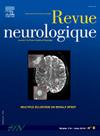文献综述:CAR - t细胞疗法是治疗成神经管细胞瘤的一种很有前途的免疫治疗方法。
IF 2.3
4区 医学
Q2 CLINICAL NEUROLOGY
引用次数: 0
摘要
髓母细胞瘤(MB)约占所有儿童脑肿瘤的20-25%和颅内胚胎肿瘤的63%,在儿科人群中每年的发病率约为百万分之5。后窝高级别神经上皮肿瘤可在儿童、青少年甚至成年的任何年龄发生,常通过脑脊液扩散。虽然大多数MB病例是散发的,但它们可能与遗传易感性综合征有关。尽管这些基因突变提供了潜在的治疗靶点,但针对这些新抗原的突变数量有限,现有的治疗方法也很少,这构成了重大挑战。尽管采用了积极的多模式治疗方法,但大约30%的患者最终死于MB,幸存者经常面临严重影响其生活质量的长期副作用。MB具有独特的分子因子,需要仔细考虑治疗靶点,如血脑屏障、肿瘤微环境以及癌症干细胞与大块肿瘤组织的不同反应。传统治疗通常包括最大限度的安全切除、适应风险的化疗和/或放射颅脊髓照射。虽然人们普遍认同化疗对MB患者的益处,但副作用仍然普遍存在,这强调了寻找替代治疗策略的必要性。鉴于MBs的异质性和缺乏补救性治疗,免疫疗法已成为一种有希望的新治疗途径。这种个性化的方法旨在提高特异性并潜在地减少副作用。在这些创新方法中,过继细胞疗法,特别是嵌合抗原受体T (CAR - T)细胞疗法显示出很大的前景。本文将在CAR - t细胞疗法在其他实体肿瘤中的成功应用的基础上,探讨靶向MB的CAR - t细胞疗法的潜力。本文章由计算机程序翻译,如有差异,请以英文原文为准。
Literature review: CAR T-cell therapy as a promising immunotherapeutic approach for medulloblastoma
Medulloblastoma (MB) accounts for approximately 20–25% of all childhood brain tumours and 63% of intracranial embryonic tumours, with an annual incidence of around 5 cases per million in the paediatric population. This high-grade neuroepithelial tumour of the posterior fossa can develop at any age during childhood, adolescence and even adulthood, often spreading via cerebrospinal fluid. While most MB cases are sporadic, they can be associated with genetic predisposition syndromes. Although these genetic mutations present potential therapeutic targets, the limited number of mutations and few existing therapies aimed at these neoantigens pose significant challenges. Despite aggressive multimodal treatment approaches, approximately 30% of patients ultimately succumb to MB, and survivors frequently face long-term side effects that severely impact their quality of life. MB harbours unique molecular factors, necessitating careful consideration of therapeutic targets such as the blood-brain barrier, tumour microenvironment, and the differing responses of cancer stem cells versus bulk tumour tissue. Conventional treatment typically involves maximal safe resection, risk-adapted chemotherapy, and/or radiation craniospinal irradiation. While there is general agreement on the benefits of chemotherapy for MB patients, adverse side effects remain prevalent, underscoring the need for alternative therapeutic strategies. Given the heterogeneous nature of MBs and the lack of salvage treatment, immunotherapy has emerged as a promising novel treatment avenue. This personalized approach aims to enhance specificity and potentially reduce side effects. Among these innovative methods, adoptive cell therapy, particularly chimeric antigen receptor T (CAR T) cell therapy, shows great promise. This review will explore the potential of CAR T-cell therapies in targeting MB, building on their successful application in other solid tumours.
求助全文
通过发布文献求助,成功后即可免费获取论文全文。
去求助
来源期刊

Revue neurologique
医学-临床神经学
CiteScore
4.80
自引率
0.00%
发文量
598
审稿时长
55 days
期刊介绍:
The first issue of the Revue Neurologique, featuring an original article by Jean-Martin Charcot, was published on February 28th, 1893. Six years later, the French Society of Neurology (SFN) adopted this journal as its official publication in the year of its foundation, 1899.
The Revue Neurologique was published throughout the 20th century without interruption and is indexed in all international databases (including Current Contents, Pubmed, Scopus). Ten annual issues provide original peer-reviewed clinical and research articles, and review articles giving up-to-date insights in all areas of neurology. The Revue Neurologique also publishes guidelines and recommendations.
The Revue Neurologique publishes original articles, brief reports, general reviews, editorials, and letters to the editor as well as correspondence concerning articles previously published in the journal in the correspondence column.
 求助内容:
求助内容: 应助结果提醒方式:
应助结果提醒方式:


